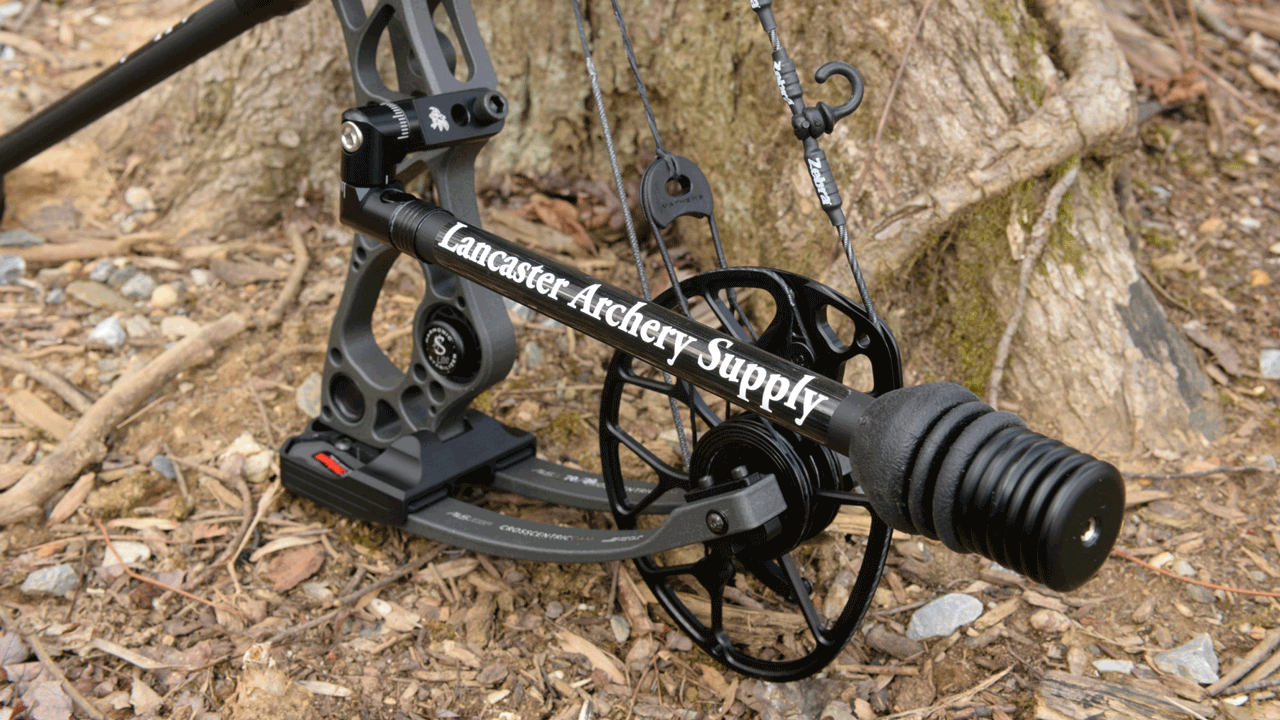Optimizing Your Archery Performance With the Right Substance Bow Stabilizer: a Detailed Review
In the world of archery, uniformity and accuracy are extremely important to achieving optimal efficiency. One vital yet often-overlooked element in improving accuracy is the compound bow stabilizer. This unassuming tool plays a considerable role in steadying your goal, reducing bow torque, and absorbing vibrations. Nonetheless, the performance of a stabilizer pivots on different variables, consisting of positioning, design, and weight. By understanding the nuances of picking and optimizing a substance bow stabilizer, archers can tweak their devices to raise their capturing experience to brand-new levels of proficiency and control.
Value of Bow Stabilizers in Archery

Furthermore, bow stabilizers assist in balancing the weight distribution of the bow, which can boost the archer's security while intending and firing. By adding weight to the front of the bow, stabilizers can minimize the quantity of torque experienced upon launch, resulting in a smoother and extra controlled shot - compound bow stabilizer. This weight circulation likewise helps in holding the bow consistent for a longer duration, enabling the archer to aim much more properly
Kinds Of Compound Bow Stabilizers
When thinking about the various sorts of substance bow stabilizers readily available, it is vital to recognize their distinct functions and features to establish the most suitable alternative for making the most of archery efficiency. One of the most usual sorts of substance bow stabilizers consist of sidebar stabilizers, front stabilizers, and back stabilizers. Sidebar stabilizers affix to the sides of the riser and help in balancing the bow throughout the intending process. Front stabilizers, likewise referred to as lengthy poles, are connected to the front of the riser and help in soaking up and reducing any resonances triggered by the launch of the arrow, hence enhancing accuracy. Back stabilizers, likewise called rear stabilizers, are installed to the back of the bow and aid in counteracting the weight of various other devices, causing boosted stability and constant intending. In addition, some stabilizers feature flexible weights that permit archers to fine-tune the balance and feeling of their bows according to their preferences, making them functional options for archery enthusiasts of all degrees.
Factors to Think About When Selecting
In evaluating compound bow stabilizers, comprehending the unique attributes and functions of each kind is important for making an informed choice on one of the most suitable option to improve archery performance. When picking a stabilizer, one should consider the weight of the stabilizer itself. While a much heavier stabilizer can provide even more stability by minimizing the bow's movement, it may additionally cause tiredness during lengthy shooting sessions. Balance is another vital variable to ponder. The stabilizer's length and design dramatically impact the bow's balance, influencing the shooter's ability to hold consistent aim. Furthermore, the product of the stabilizer can affect its effectiveness. Carbon fiber stabilizers are lightweight and soak up vibrations well, enhancing accuracy. Additionally, the number and adjustability of dampeners on the stabilizer can adjust its efficiency by decreasing sound and shock upon launch. By very carefully next reviewing these factors, archers can select a substance bow stabilizer that straightens with their shooting design and optimizes their total performance on the archery array.
Setup and Adjustment Tips
For optimal performance and accuracy in archery, understanding the setup and modification of your bow stabilizer is vital. Correct setup starts with attaching the stabilizer to the bow's riser, guaranteeing it is firmly secured. Many stabilizers come with placing hardware for easy setup, yet it's critical to comply with the producer's standards for the specific model you have. As soon as connected, adjusting the stabilizer entails discovering the right equilibrium between weight distribution and size. Try out different combinations until you attain the desired feeling and stability.
When readjusting the stabilizer, start with small incremental adjustments rather than extreme changes. Pay focus to how the bow reacts to adjustments in stabilizer setups and make adjustments appropriately. Consistently check the stabilizer's rigidity and total problem to guarantee it continues to work efficiently.
Upkeep and Treatment Standards

It is also necessary to save your bow with the stabilizer in a safe and safe area when not in usage. Stay clear of leaving it in severe temperature levels or subjected to guide sunlight for extensive durations, as this can cause damages to the stabilizer. Regularly check the stabilizer's placement to guarantee it is read here still effectively placed on your bow. Complying with these maintenance and treatment standards will help you get one of the most out of your bow stabilizer and improve your overall archery efficiency.
Verdict
Finally, choosing the best compound bow stabilizer is crucial for optimizing archery performance. Recognizing the significance, types, variables to think about, installation and modification pointers, in addition to maintenance and care guidelines can greatly affect one's precision and consistency in capturing. By picking a stabilizer that suits private demands and preferences, archers can boost their general performance and accomplish far better results on the variety or in competitors.
Bow stabilizers play a vital function in boosting an archer's precision and consistency by minimizing resonances and maintaining the bow throughout the release of an arrowhead - compound bow stabilizer.In addition, bow stabilizers help in balancing the weight circulation of the bow, which can improve the archer's stability while intending and firing. The most typical kinds of compound bow stabilizers include sidebar stabilizers, front stabilizers, and back stabilizers. Back stabilizers, likewise called back stabilizers, are placed to the back of the bow and help in counterbalancing the weight of other devices, resulting in boosted security and steady aiming. When selecting a stabilizer, one must consider the weight of the stabilizer itself